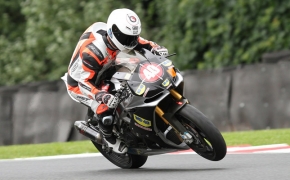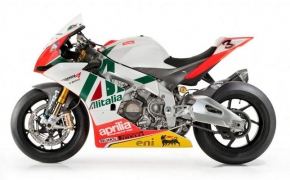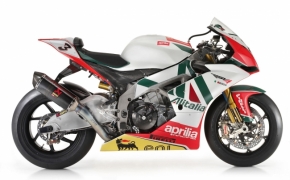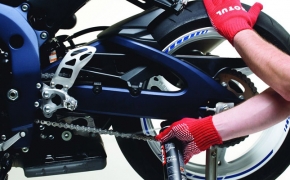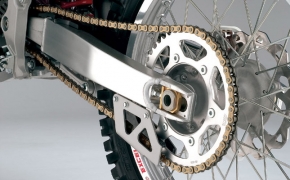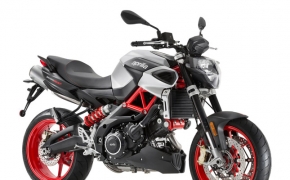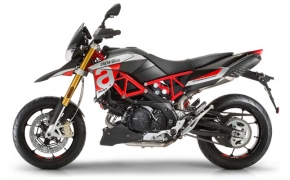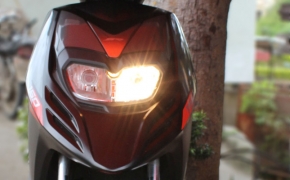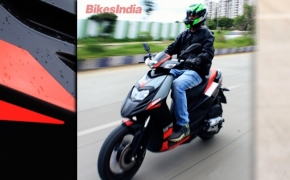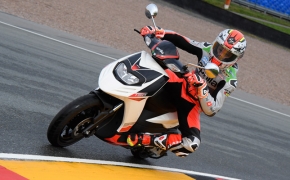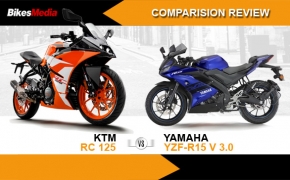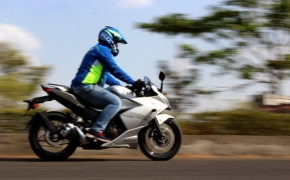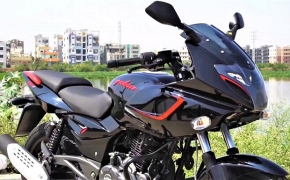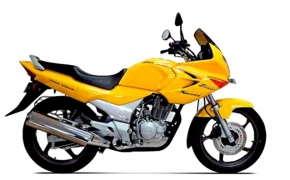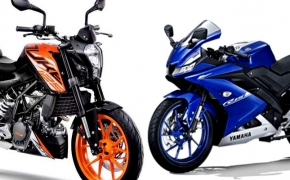When Ducati introduced Traction control on its 1098R motorcycle back in 2008, it was the first production motorcycle to ship out of the factory with the system built-in. Then BMW upped the ante by introducing an advanced traction control system in its S1000RR, which still carries the same system except for some improvements.
From then each and every superbike came equipped with electronic aids, at least power modes (on the GSX-R series bikes) and ABS has become an integral part of the bike's braking department. What makes the manufacturers concentrate equally on electronic aids as much as they do on the engine department? Read on.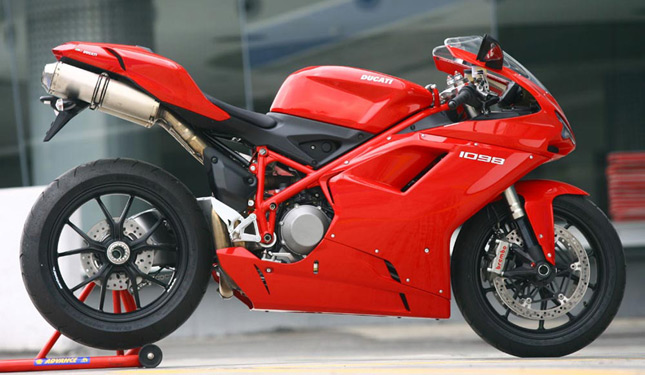
The FIM organizes the World Superbike Championship (WSBK), along with various other classes like the world supersport and the superstock 1000. FIM WSBK regulations change from year to year, has a Capacity cap (1200cc for twin engines, with intake restriction and 1000cc for 4 cylinder ones). The rules can be modified to add or remove additional features that are used in the previous season.
Some of the goodies found on modern day superbikes are as follows:
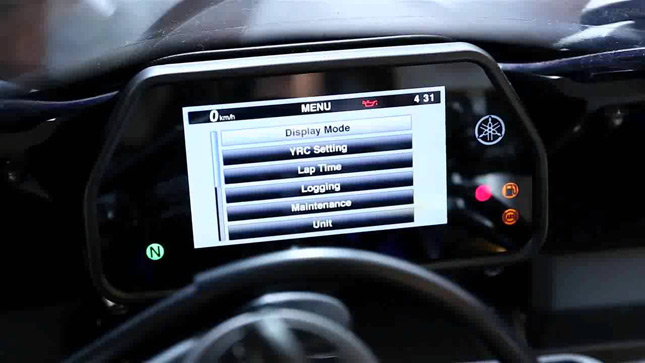
FIM implies cost regulations on additional equipment like suspension and electronics, and homologates all the major components of the bike like the airbox, the valve timing and the whole engine internals, except for the cam shafts and con-rods. The whole electronics package cannot be procured under the 8,000 euro price cap, necessitating manufacturers to homologate them into their road going superbikes.
Therefore, manufacturers are opting to mass-produce a near-WSBK motorcycle instead of producing a normal one and modifying it to make it competitive, making them extremely powerful and competitive. Modern-day superbikes produce a peak power north of 200 horsepower at the crank, which necessitates the diverse usage of sensors and on-board algorithms to tame the brutal power of the bike, functions like anti-wheelie, anti slide and quick-shifter have become standard equipment on almost all road going superbikes.
Homologations requires the sale of at least 200 motorcycles of the same specifications as the racing bike, to the general public, for example, Bikes like the Ducati Panigale R (2015), the BMW S1000RR (2015), MV Agusta's F4 RC and the Aprilia RSV4-RF (2015) are race-ready homologation versions of their normal road going superbikes.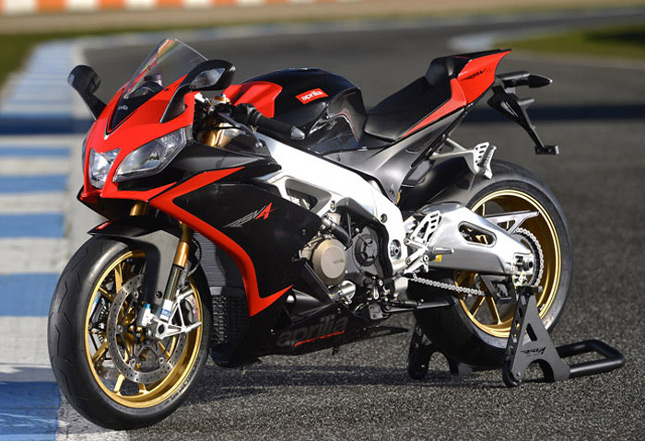
A Full- Blown electronics package provides access to the cutting edge technologies used by the racers, to the general public. These are Ready-To- race bikes which can be a treat to track-day goers and racing fanatics who hit the track every weekend.
By: Suraj
From then each and every superbike came equipped with electronic aids, at least power modes (on the GSX-R series bikes) and ABS has become an integral part of the bike's braking department. What makes the manufacturers concentrate equally on electronic aids as much as they do on the engine department? Read on.

The Ducati 1098R is the first production motorcycle to get a full Race spec traction control system.
The FIM organizes the World Superbike Championship (WSBK), along with various other classes like the world supersport and the superstock 1000. FIM WSBK regulations change from year to year, has a Capacity cap (1200cc for twin engines, with intake restriction and 1000cc for 4 cylinder ones). The rules can be modified to add or remove additional features that are used in the previous season.
Some of the goodies found on modern day superbikes are as follows:
Riding Modes:
Riding modes involve different engine behavior in varying conditions like wet mode for the lowest and most sane power mode, normal mode for commuting and highway rides and a race mode which unleashes the full potential of the motorcycle. These variable behavior is achieved by loading multiple engine maps in the engine control unit or ECU, which can be changed by controls either on the dash or the switches on the handle mounted switch gear.
Launch Control:
Launch control is the most used feature in Motorsport racing. When the mode is toggled, the ECU limits the RPM to a particular limit, which provides the rider a smooth and commanding launch off the startup line. Launch control is a must-have on a MotoGP bike, and has seeped down to production motorcycles as well. Bikes like the Ducati 1199/1299 Panigale, the BMW S1000RR and the 2015 Yamaha R1/R1M possess this feature.
Wheelie Control:
Probably the most important feature on board a powerful motorcycle is unarguably, wheelie control. This feature gathers information from an inbuilt Gyroscope (modern bikes have 6-axis gyros and/or a IMU) to sense the lift, and tones down the power to keep the front wheel from lifting off the ground. This eliminates power wheelies and a smoother ride when ridden flat-out.
Electronically Adjustable Suspension.
This can be the most advanced feature used in the suspension department. Previously bikes had fully adjustable front forks and rear shocks, which facilitates the rider to adjust the suspension at his will, depending on the ride conditions and the circuit. Öhlins designed a radical front fork- the TTX30, which adjusts the preload and damping by ITSELF. This uses the sensors on board the bike and adjusts itself automatically with respect to the road conditions. The Ducati 1199 Superleggera, the 1299 Panigale and the 2015 Yamaha R1M use this Radical feature.
Quick-shifter And Auto Blipper.
Previous racing prototypes needed the use of the clutch to change gears without damaging the gearbox and for smooth up-shifts and had to manually blimp the throttle for the downshifts. Ducati Developed the Ducati Quick-shifter back in 2008, which eliminated the need of the clutch while up-shifting, but needed manual clutching and throttle blipping while downshifting. BMW introduced the HP4 with an auto blipper, which eliminates the throttle to be manually blipped for each downshift.
Riding modes involve different engine behavior in varying conditions like wet mode for the lowest and most sane power mode, normal mode for commuting and highway rides and a race mode which unleashes the full potential of the motorcycle. These variable behavior is achieved by loading multiple engine maps in the engine control unit or ECU, which can be changed by controls either on the dash or the switches on the handle mounted switch gear.
Launch Control:
Launch control is the most used feature in Motorsport racing. When the mode is toggled, the ECU limits the RPM to a particular limit, which provides the rider a smooth and commanding launch off the startup line. Launch control is a must-have on a MotoGP bike, and has seeped down to production motorcycles as well. Bikes like the Ducati 1199/1299 Panigale, the BMW S1000RR and the 2015 Yamaha R1/R1M possess this feature.
Wheelie Control:
Probably the most important feature on board a powerful motorcycle is unarguably, wheelie control. This feature gathers information from an inbuilt Gyroscope (modern bikes have 6-axis gyros and/or a IMU) to sense the lift, and tones down the power to keep the front wheel from lifting off the ground. This eliminates power wheelies and a smoother ride when ridden flat-out.
Electronically Adjustable Suspension.
This can be the most advanced feature used in the suspension department. Previously bikes had fully adjustable front forks and rear shocks, which facilitates the rider to adjust the suspension at his will, depending on the ride conditions and the circuit. Öhlins designed a radical front fork- the TTX30, which adjusts the preload and damping by ITSELF. This uses the sensors on board the bike and adjusts itself automatically with respect to the road conditions. The Ducati 1199 Superleggera, the 1299 Panigale and the 2015 Yamaha R1M use this Radical feature.
Quick-shifter And Auto Blipper.
Previous racing prototypes needed the use of the clutch to change gears without damaging the gearbox and for smooth up-shifts and had to manually blimp the throttle for the downshifts. Ducati Developed the Ducati Quick-shifter back in 2008, which eliminated the need of the clutch while up-shifting, but needed manual clutching and throttle blipping while downshifting. BMW introduced the HP4 with an auto blipper, which eliminates the throttle to be manually blipped for each downshift.

The 2015 R1 has MotoGP inspired electronics and dash, critics name it the "M1 of superbikes"
FIM implies cost regulations on additional equipment like suspension and electronics, and homologates all the major components of the bike like the airbox, the valve timing and the whole engine internals, except for the cam shafts and con-rods. The whole electronics package cannot be procured under the 8,000 euro price cap, necessitating manufacturers to homologate them into their road going superbikes.
Therefore, manufacturers are opting to mass-produce a near-WSBK motorcycle instead of producing a normal one and modifying it to make it competitive, making them extremely powerful and competitive. Modern-day superbikes produce a peak power north of 200 horsepower at the crank, which necessitates the diverse usage of sensors and on-board algorithms to tame the brutal power of the bike, functions like anti-wheelie, anti slide and quick-shifter have become standard equipment on almost all road going superbikes.
Homologations requires the sale of at least 200 motorcycles of the same specifications as the racing bike, to the general public, for example, Bikes like the Ducati Panigale R (2015), the BMW S1000RR (2015), MV Agusta's F4 RC and the Aprilia RSV4-RF (2015) are race-ready homologation versions of their normal road going superbikes.

The Aprilia RSV4 has been the most successful bike in the last five years.
A Full- Blown electronics package provides access to the cutting edge technologies used by the racers, to the general public. These are Ready-To- race bikes which can be a treat to track-day goers and racing fanatics who hit the track every weekend.
By: Suraj












